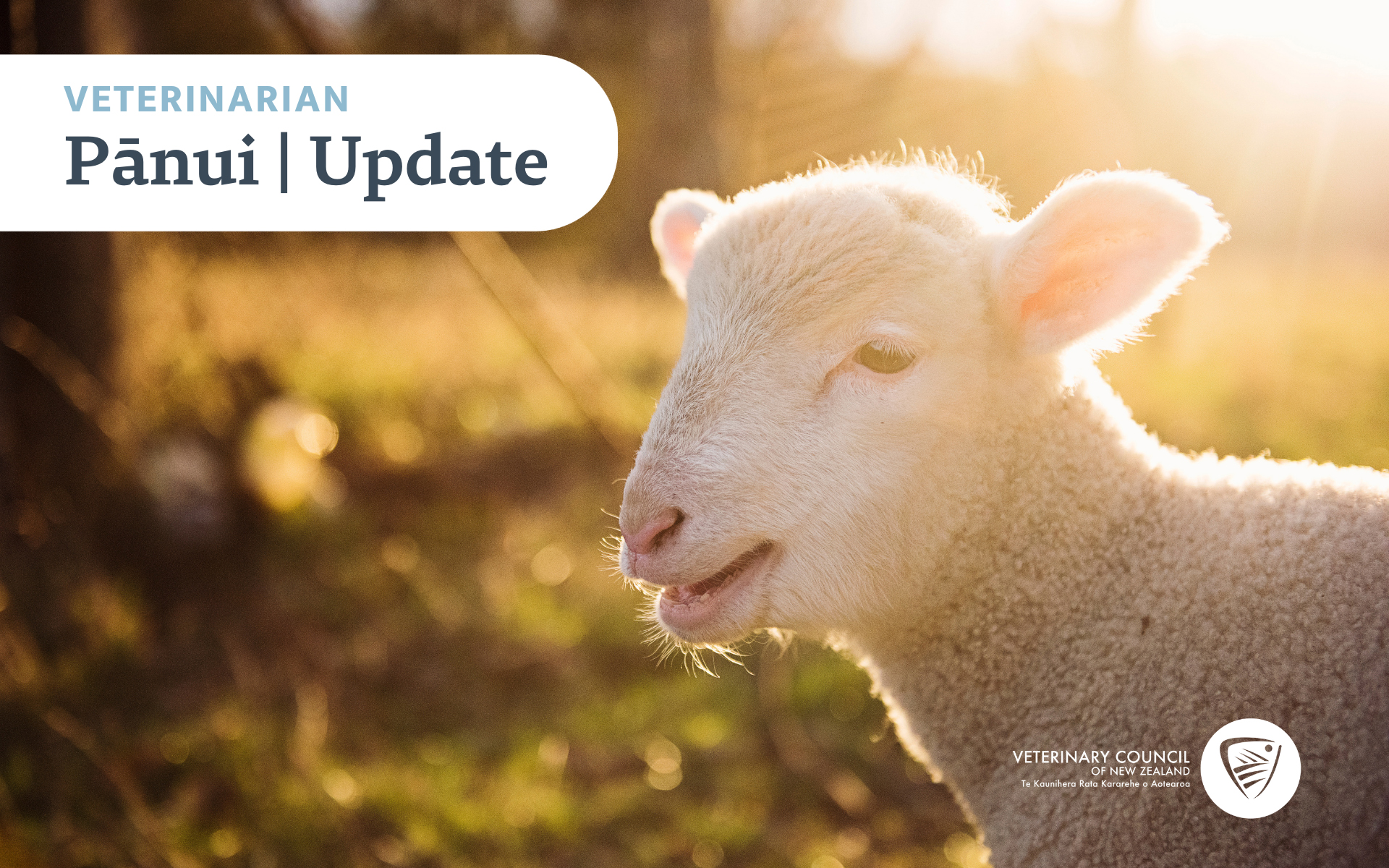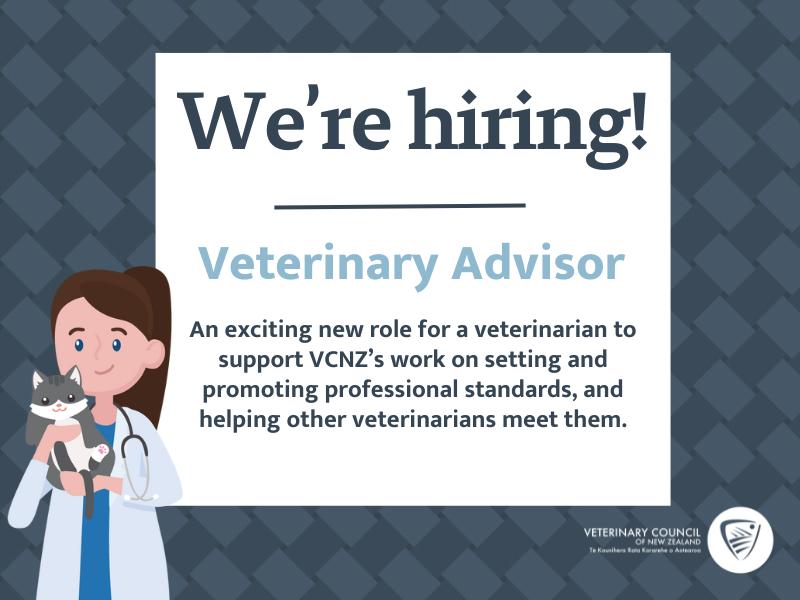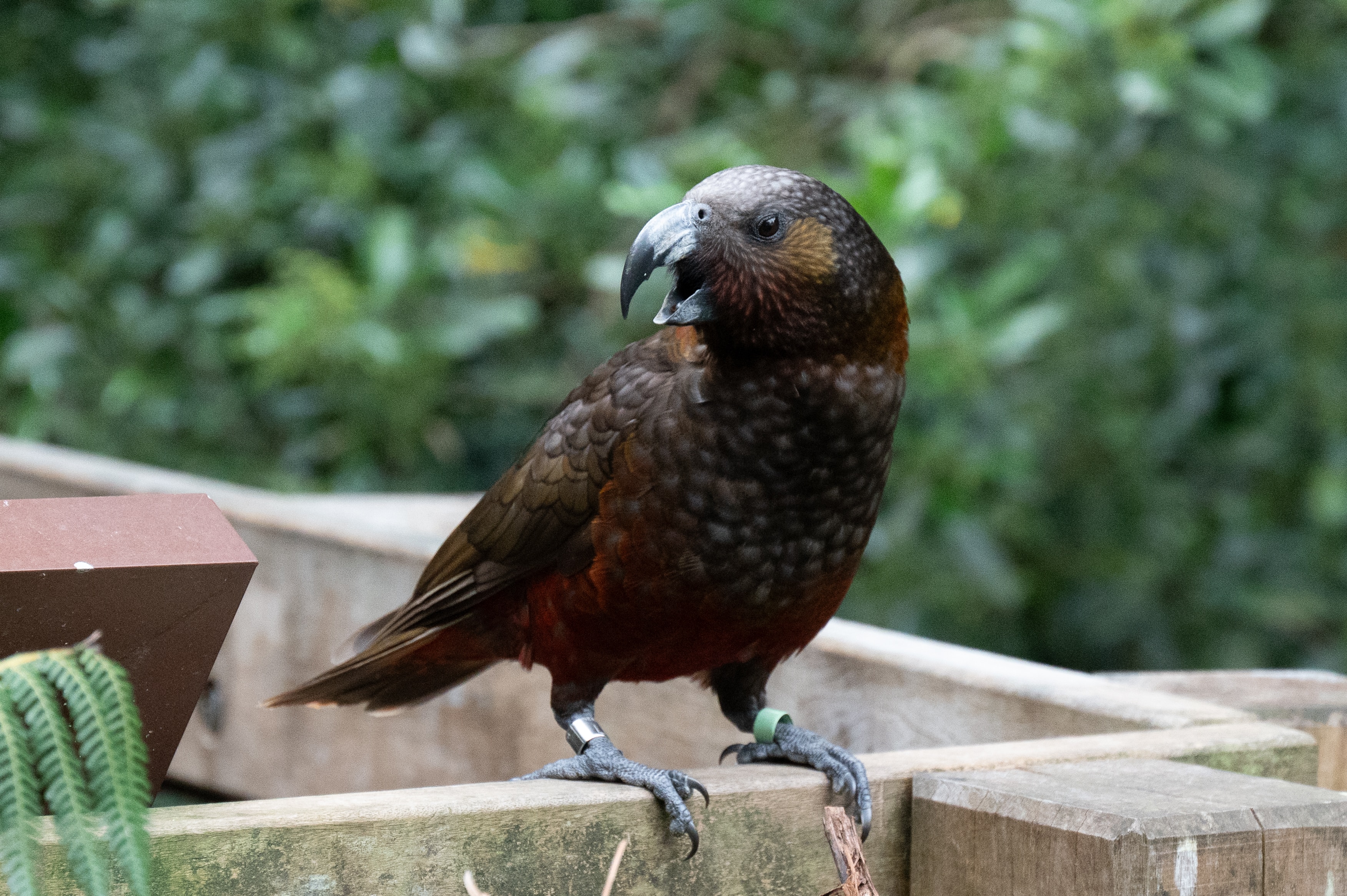
Kia ora
Welcome to our October update. In this edition, we have included an overview of two important pieces of work VCNZ is doing to strengthen and better regulate the veterinary profession. Firstly, we are reviewing our emergency care requirements and secondly we are developing a new strategy to help manage antimicrobial resistance (AMR). The Council regulates the requirements for veterinarians to provide emergency care and uses its regulatory tools to support responsible antimicrobial use.
These pieces of work complement initiatives in other parts of the sector, including the New Zealand Veterinary Association and Ministry for Primary Industries, who are also concerned about these issues. As part of completing this work, we will be consulting widely and will be keen to receive your feedback. We will share more about how you can contribute soon.
In this pānui, we have also included a new case study involving the Complaints Assessment Committee (CAC), and news about a Phenobarbitone supply shortage due to the closure of a New Zealand manufacturer.
There is an upcoming series of webinars with Dr Sonja Olson about stress in the veterinary profession which we encourage all veterinarians to attend. There are some interesting topics being discussed and the webinars are free of charge so it would be great to see you there.
We have also shared a summary of some of the items discussed at the September Council meeting; as well as information about a new way for international veterinarians to gain experience towards being accepted for registration, if their qualifications are not already recognised by VCNZ.
New AMR strategy and review of emergency care provision
AMR
Antimicrobial resistance (AMR) is recognised as a growing threat to human and animal health around the world. To better support veterinarians with their important work in tackling this issue, VCNZ is developing a new AMR strategy.
Veterinarians, as stewards of antimicrobial products and the sole authoriser of their use in animals, have a critical role to play in combatting and managing the risks of AMR. A project, led by the Council’s Deputy Chair Dr Ben Davidson, has been established to create a strategy that supports responsible antimicrobial use within the profession. It will plan whether and how VCNZ should use its regulatory tools including stakeholder partnerships, enforcement and leadership to make progress.
As part of its process, the steering group is reviewing current evidence of antibiotic use and antimicrobial stewardship by New Zealand veterinarians, along with interviewing a range of stakeholders and evaluating existing AMR strategies. A discussion document summarising the group’s research and potential strategies will be widely consulted on before a strategy is finalised.
“We’re keen to hear from all veterinarians and people who want to share their thoughts or feedback along the way,” Ben says.
VCNZ CEO and Registrar Iain McLachlan says careful controls are in place to manage any possible conflicts between this work and Ben’s Council work. “Ben is well qualified and highly regarded for his expertise in this area, so we are lucky to have him leading this project. Ultimately, we are aiming to deliver a strategy that has been informed by a broad range of perspectives and that veterinarians and other stakeholders will support,” he says. “We look forward to keeping the sector informed as this work progresses.”
For more information or updates about the work being done by the steering group, visit: https://www.vetcouncil.org.nz/Web/3.About/Current%20Projects/AMR-Strategy.aspx
Emergency/After Hours care
We know providing emergency and after hours care can be challenging, and have a significant impact on veterinarians' lives. Reports of difficulties in providing emergency care have increased over the last few years, and have often been attributed to a shortage of veterinarians in Aotearoa
As a result, VCNZ is conducting a review to better understand whether the emergency care rules are still fit for purpose, and what changes might be needed. Currently, the Code requires veterinarians to ensure there is an emergency service available for their clients at all times, either by offering or being affiliated with a 24/7 facility or service.
“This review will be important in helping VCNZ to better understand the impact that providing emergency care has on veterinarians and veterinary teams,” VCNZ CEO and Registrar Iain McLachlan says.
“In some places, emergency care provision works well and in others it is a major challenge. It’s really important we have a sustainable and effective model in place so that members of the public can access urgent care for their pets or animals, while veterinarian wellbeing and work satisfaction remain high.”
The review will be done over the next six months, and will use a systems thinking approach, involving a wide range of stakeholders, to understand what the core emergency care issues are. As part of this work, VCNZ will also be looking at how providing Emergency/After Hours care impacts the sustainability of veterinarian businesses, particularly around employment and financial viability.
All veterinarians will be invited to contribute their thoughts, ideas and experiences throughout the review.
To find out more about the emergency care review or milestone updates, visit: https://www.vetcouncil.org.nz/Web/3.About/Current%20Projects/Emergency-Care-Review.aspx

To read more about this role or to apply, visit https://www.seek.co.nz/job/70817821?type=promoted#sol=da72834bbede0c067a2257b5b1c7ab9be551f999
Case study: Surgical swab left in patient
This case study demonstrates how complaints are managed, and what the profession can learn from them. These will be a regular feature of this newsletter. Please let us know if there are specific issues you would like us to cover.

Background
A female cat underwent an ovariohysterectomy, and as part of the procedure, was anaesthetised and intubated. Once she had recovered from the anaesthetic, she was discharged. During a follow up visit, the vet who performed the procedure felt an abdominal mass when examining the cat, and asked the client to consider letting them perform an ultrasound during their next appointment if the mass was still there. The client did not return to the clinic.
Several years later, a veterinarian from a different clinic was examining the cat for another issue and felt the mass. They performed a laparotomy to investigate and found a surgical swab had been left in the cat and was causing the mass. The veterinarian noted that the cat did not appear to be in pain and was in good health.
The complaint
The client made a complaint to VCNZ about the veterinarian who performed the ovariohysterectomy and left the gauze swab inside their cat’s abdomen.
The issues raised in the complaint were whether the quality of care was appropriate and provided to the expected standard for veterinarians in New Zealand.
How it was dealt with
A Complaints Assessment Committee (CAC), which oversees the formal complaints process, considered the case and its options under the Veterinarians Act 2005 (the Act) and decided that no further action was required.
It found that there was no evidence of previous or subsequent similar incidents involving the veterinarian, and did not find that the veterinarian acted in a way that would call for formal action under the Act.
The CAC acknowledged that the veterinarian took full responsibility for the error by sending a written apology to the client, and putting a protocol in place to do a swab and needle count at the beginning and end of each surgery.
Learnings for the profession
This case provides an example of a veterinarian taking responsibility for their mistake and being proactive in managing the situation with a client.
The veterinarian demonstrated to the CAC that they had learned from the case and mitigated the chances of a similar issue happening again. The CAC noted that while the situation had caused the client some distress, it was an isolated event and did not raise concerns about the veterinarian’s competence.
In its finding, the CAC highlighted the importance for all clinical staff members to be aware of, and understand, standard operating procedures.
For more information about VCNZ’s complaints process, visit https://www.vetcouncil.org.nz/Web/1.Support-and-Information/Vets/Concerns.aspx
Phenobarbitone supply issue
Due to the closure of a New Zealand manufacturer, veterinary access to phenobarbitone has recently been limited, leading to concern for patients that require life-long treatment with the drug.
Agricultural Compounds and Veterinary Medicines (ACVM) is working with wholesalers and veterinary medicine registrant companies on interim and permanent solutions. Veterinarians can find more information on the work underway in this ACVM Alert Notification on the MPI website. This will be updated as soon as more information is available. If you have any specific questions, contact ACVM directly by emailing [email protected]
For animals that may respond to a change in therapy, another option veterinarians can consider is transitioning patients on to the anticonvulsant Imepitoin. There are two veterinary medicines currently registered and available in New Zealand containing Imepitoin: Pexion 100mg Tablets for Dogs (ACVM registration number A010986) and Pexion 400mg Tablets for Dogs (ACVM registration number A010987).
Free webinars: Practical approaches and skills to navigate stress in the veterinary profession
Join Dr Sonja Olson for a series of free webinars about practical approaches and skills to navigate stress in the veterinary profession.
-
Wednesday 8 November 2023, 7.30pm
Stress first aid for self-care and peer support: effectively meeting stress in the moment.
-
Wednesday 22 November 2023, 7.30pm
Financial concerns around providing veterinary care: understanding moral injury and distress impacts on the caregivers.
-
Wednesday 6 December 2023, 7.30pm
The trauma-informed care framework: a key to sustaining compassion and offering high quality care in veterinary practice environments.
For more information about each of the webinar topics and to register, visit https://nzvaevents.org.nz/stress-in-veterinary-profession

New step for internationally qualified veterinarians to gain NZ registration
There is a new way for international veterinarians, whose qualifications are not recognised by VCNZ, to gain experience and training towards being accepted for registration.
This involves a year of supervised clinical training. The School of Veterinary Science – Tāwharau Ora, aims to offer some places each year for the clinical training component under the following programmes:
-
American Association of Veterinary State Boards, Programme for the Assessment of Veterinary Education Equivalence (PAVE)
-
American Veterinary Medical Association, Certificate of the Educational Commission for Foreign Veterinary Graduates (ECFVG)
-
Canadian National Examining Board Licensing Examination (CVMA NEB)
Preference will be given to internationally-qualified veterinarians who already have New Zealand residency or citizenship, although international students will also be considered. Information about tuition fees and other costs can be found here.
To be considered, applicants must meet the requirements of one of the programmes named above. Applicants who do not speak English as their first language need to demonstrate they meet the requirements of VCNZ’s Policy on English Competence.
For more information about registering as a veterinarian in New Zealand, visit https://www.vetcouncil.org.nz/Web/Web/1.Support-and-Information/Vets/Registration.aspx
September Council meeting
VCNZ held its quarterly Council meeting in Christchurch at the end of September. Below is a summary of some of the topics that were discussed.
On the agenda were three key pieces of work – the review of the Veterinarians Act, the review of emergency (after hours) care requirements, and the development of an AMR strategy. These are important pieces of work and we will be sharing updates with you regularly.
As part of VCNZ’s leadership role, the Council discussed its stakeholder relationships. It is looking forward to refreshing its stakeholder strategy and considering how VCNZ can best connect with stakeholders with special interest areas.
VCNZ CEO and Registrar Iain McLachlan and Chair Dr Lindsay Burton have been spending time with the Australasian Veterinary Boards Council (AVBC) discussing its work to promote sustainable practice and consistent standards across Australasia. Earlier in the year, a Parliamentary inquiry into the New South Wales veterinary shortage was established. The Council is paying close attention to this.
Other discussion points included the value the Council receives from travelling to talk to veterinarians. When Council members and staff visit regions it provides opportunities for local vets to get together and it is a very effective way to deliver education and answer questions. While in Christchurch, the Council was able to meet two groups of veterinarians and have a day’s worth of meeting time, making the trip highly productive and cost effective. One of the many useful takeaways from these meetings was a discussion about further work with Allied Veterinary Professional groups, including large animal veterinary technicians, to help manage the veterinarian shortage. VCNZ staff will connect with these groups to find ways to provide support.
Other happenings in the sector, such as a recent noho marae for Māori and Pacific Island vet students, have provided good opportunities to connect. One of the topics on the Council’s radar is governance succession and how we can facilitate getting younger people involved with the Council in the future. VCNZ staff have also been receiving more and more inquiries about limited registration and will be conducting some research into this.
To ensure all data kept by VCNZ is safe and secure, the Council decided to renew its cyber security contract. This contract has proven to be incredibly helpful and we will continue to invest and improve in this space.
The Council also met with its communications contractor at the Christchurch meeting to discuss upcoming work, including adding a summary of the quarterly Council meetings to VCNZ’s monthly pānui.
Thank you
We hope you found this newsletter interesting and informative. If you’d like to provide feedback or send us a topic or story for next time, please email [email protected]
Please also contact us if you have any questions or need support.